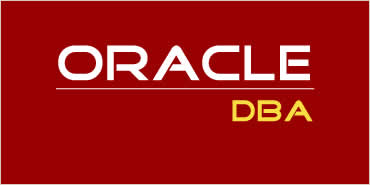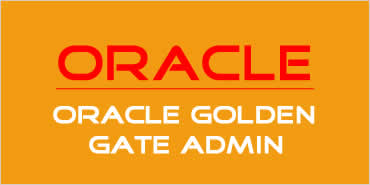Courses Overview
Premier Online Trainings Institute provides best Oracle RAC DBA training in Hyderabad, Banglore by our Highly Professional certified trainers.
Oracle Real Application Clusters (Oracle RAC) is a clustered version of Oracle Database based on a comprehensive high-availability stack that can be used as the foundation of a database cloud system as well as a shared infrastructure, ensuring high availability, scalability, and agility for any application.
* We also provide Online Training for Normal Track, Fast Track and Weekend BatchesCourse Curriculum
1 . Introduction to Oracle 12c/19c RAC and Grid Infrastructure Architecture + -
- Describe the Automatic Storage Management (ASM) architecture
- Describe the components of ASM
- Benefits of Real Application Clusters (RAC)
- What is a DB Cluster?
- Architectures of DB Clusters
- What is a Cluster Interconnect?
- Problems with Other Architectures
- Introduction and types of Clusters
- Components of a Cluster
- H/W Requirement for Clusters
- Define Oracle Real Application Clusters
2 . Oracle RAC 12c/19c Installation. + -
- Operating System preparation for RAC/Grid Infrastructure
- Configure Automatic Storage Management (ASM) disk groups
- Configure ASM volumes
- Make the ASM cluster file system
- Mount ASM Cluster File System (ACFS) volumes
- Introduction to Network, hardware.
- Private and public network configuration
- RAC, Groups and Users for Oracle software
- Install Grid Infrastructure
- Introduction to 12c/19c RAC, daemons.
- Install Database Software.
3 . ASM Overview & Architecture + -
- Automatic Storage Management (ASM) architecture
- Components of ASM
- Create and delete Automatic Storage Management (ASM) disk groups
- Set the attributes of an existing ASM disk group
- Perform ongoing maintenance tasks on ASM disk groups
- Explain key performance and scalability considerations for ASM disk groups
- Administering ASM Instances
- Explain and apply (ASM) initialization parameters
- Manage ASM instances and associated processes
- Monitor ASM using the V$ASM dynamic performance views
4 . Real Application Cluster(RAC) Architecture + -
- Overview of Oracle Real Application Clusters
- RAC Scalability
- High Availability Architecture
- Oracle Basic Processes
- Oracle Basic Internal Structures
- Oracle RAC Additional Processes
- Oracle RAC Additional SGA Areas
- RAC Server Components
- GCS Resource Modes and Roles
- RAC Architecture and Concepts
- Background processes.
5 . Overview of Multitenant Architecture in RAC + -
- Non-CDB Architecture
- Multitenant Architecture: Benefits
- CDB in a Non-RAC Environment
- Containers
- Terminology and Data Dictionary Views
- Connection to a Non-RAC CDB
- Oracle RAC and Multitenant Configuration
- Oracle RAC and Multitenant Architecture
6 . Storage Options for RAC Database files + -
- Introduction to ASM, Advantages of ASM
- Parameters used to configure ASM
- Creating ASM instance in RAC
- Introduction to OCFS2
- Advantages of OCFS
- Database creation in RAC
- Required RAC database files
- Parameters used for RAC database
- RAC Initialization Parameter Files
- Creating the Cluster Database
- Manage redo log groups in a RAC environment
- Manage undo tablespaces in RAC Environment.
7 . Administrating RAC: + -
- Enabling and Disabling instances
- Working with spfile in RAC Environment
- Archiving schemes in RAC
- Management of OCR and Voting Disk.(Adding, Removing)
- Overview and Benefits Cache Fusion
- Concurrency and Consistency
- Cache Coherency
- Global Cache Service
- Backing Up and Recovering the Voting Disk
- Adding, Deleting, or Migrating Voting Disks
- Locating the OCR Automatic Backups
- Oracle Local Registry
- Migrating OCR Locations to ASM
- Managing Network Settings
- Managing Oracle Clusterware
8 . Managing Backup & Recovery in RAC: + -
- Consideration for Logical Backups in RAC.
- Consideration of Flash Recovery Area in RAC
- Physical Backup and Recovery in RAC through RMAN
- Backup of RAC Database
- Using RMAN for Backups
- Backup Procedures RMAN and RAC
- Recovery in the RAC Environment
- Media Recovery in RAC Instances
- Using RMAN to Recover a RAC Environment
- Recovery in an OCFS Environment
- Recovery in a Raw File System Environment
- Standby Databases in RAC Configuration
- Archive Log Gap Resolution and FAL (Fetch Archive Log)
- Performing advanced backup/ recovery techniques with ASM
- SWITCH DATABASE TO COPY
9 . High availability connections configuration + -
- Configure client side connect-time load balancing
- Configure server side connect-time load balancing
- Fast Application Notification (FAN).
- Configure server-side callouts, Configure Transparent Application Failover (TAF).
- Configure and manage Services
10 . RAC administration with srvctl & crsctl commands: + -
- Starting and stopping instances and database
- Managing services with srvctl and crsctl commands.
11 . Design for High Availability - Add and Delete Nodes and Clusters + -
- Migration to RAC (single instance to multi-instance)
- Prepare a New Node
- Extend the Oracle Grid Infrastructure Home to the New Node
- Extend the Oracle RAC Home Directory
- Add the New Node to the Cluster
- Create an Instance on the New Node
- Delete an Instance from the Cluster Database
- Remove a Node from the Cluster
12 . RAC One Node + -
- RAC One Node Concepts
- Online database migration
- Adding Oracle RAC One Node Database to an Existing Cluster
- Convert an Oracle RAC One Node database to a RAC database
- Convert an Oracle RAC database to a RAC One Node database
- Use DBCA to convert a single instance database to a RAC One Node database
13 . Manage Oracle Software and Apply Patches + -
- Configure the EM Patch Interface
- Compare software versions with the active version
- Apply Rolling Patches to a RAC System
- Apply a Patchset with the opatch Utility
- Apply a Patchset with the Oracle Universal Installer (OUI) utility
14 . RAC Performance Tuning: + -
- Determine RAC specific tuning components.
- Automatic Workload Repository and Automatic Database Diagnostic Monitor in RAC
- EM Cluster Database Performance pages.
- Analysis of Performance Issues
- Monitoring RAC Cluster Interconnect
- Using performance views
- Using AWR (Automatic Workload Repository)
- ADDM (Automatic Database Diagnostic Monitor) for RAC
- Using DB Control to Monitor RAC

 Leading Certified Faculty
Leading Certified Faculty


